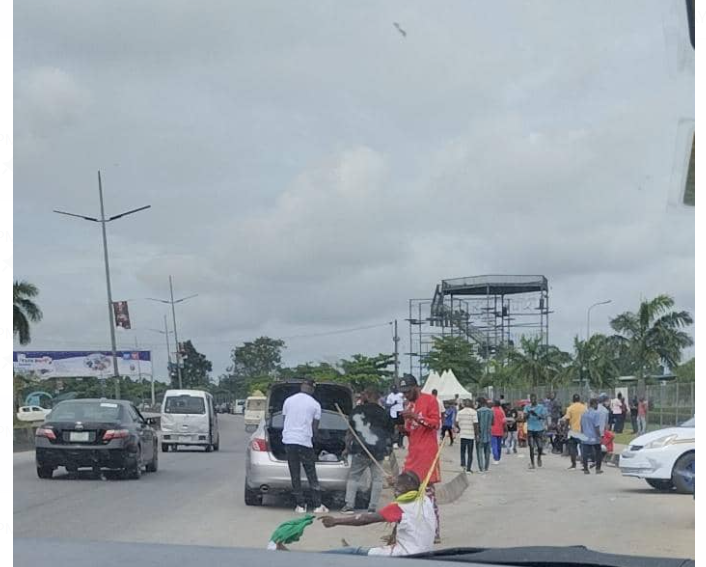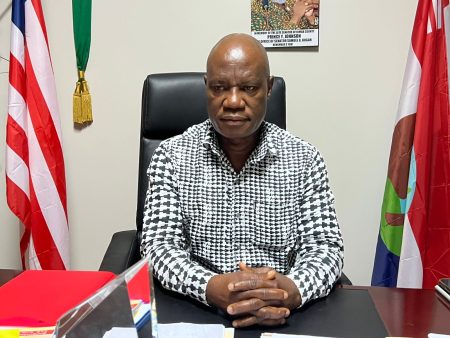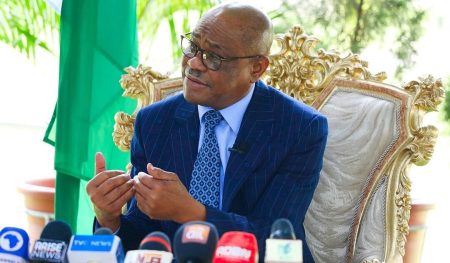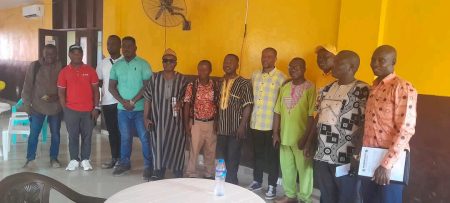On October 1, 2024, Port Harcourt witnessed significant activity as hundreds of youths assembled, allegedly to oppose the anticipated #October1 protest that aimed to address issues of bad governance. The gathering commenced around 8 am at strategic locations, notably near the Federal Secretariat and Pleasure Park, both of which had previously served as sites for the #EndBadGovernanceProtest. The presence of law enforcement was notable, with multiple police patrols, soldiers, and operatives from the Department of State Services deployed to manage the situation. As the morning progressed, the number of counter-protesters increased, with over 200 individuals assembled by 10 am.
Among the youths, one individual anonymously expressed their purpose for being there, stating they were not engaged as protesters but were instead positioned to impede any protestors who sought to rally. This sentiment indicated a concerted effort among this group to disband any demonstrations against the government. Concurrently, around fifty anti-protesters were spotted at Pleasure Park, where makeshift canopies were set up, indicating a semblance of organization within their ranks. Many of these youths appeared to adopt a defensive posture, disallowing media personnel from documenting their presence.
As the gathering continued, there were episodes of tension, evidenced by the reported arrest of five youths near the Federal Secretariat. These individuals were observed in a distressed state, stripped of their shirts and forcibly loaded into a police vehicle. This incident raised concerns among onlookers about the nature and possibly the motivations behind the crackdown on potential dissenters, especially as more youths flocked to the area without the emergence of genuine protestors at that stage.
The organizers of the October 1st Independence Day protest, under the banner of the ‘Take It Back Movement,’ had previously affirmed their resolve to proceed with the demonstration despite the risks. One prominent organizer, Andy Akpotive, called for broad participation, urging citizens to voice their opposition to inadequate governance and demand accountability from their leaders. This push for activism highlights a growing frustration within segments of the population regarding the status quo, particularly in the face of governmental repression.
In light of the events leading up to the planned protest, the Rivers State Police Command took definitive measures to deter any potential disruptions. A midnight statement from the command underscored their vigilance and commitment to maintaining public order, warning residents against participation in activities that could threaten tranquility. Police spokesperson Grace Iringe-Koko reiterated that the presence of security forces was not intended to intimidate civilians but rather to prevent the emergence of chaos and to protect against any opportunistic individuals seeking to exploit the situation.
The police’s admonishment to citizens, particularly parents, is indicative of the state’s broader approach to managing public dissent. They appealed for restraint and encouraged lawful behavior, aiming to preserve the peace. This communication from law enforcement reflects an environment in which the balance between safeguarding civil rights and maintaining order is in constant negotiation, revealing the complexities involved in response to public demonstrations in Nigeria. As the day of the October 1 protest approached, the atmosphere in Port Harcourt remained charged, marked by a palpable tension between those advocating for change and those staunchly opposing it.














